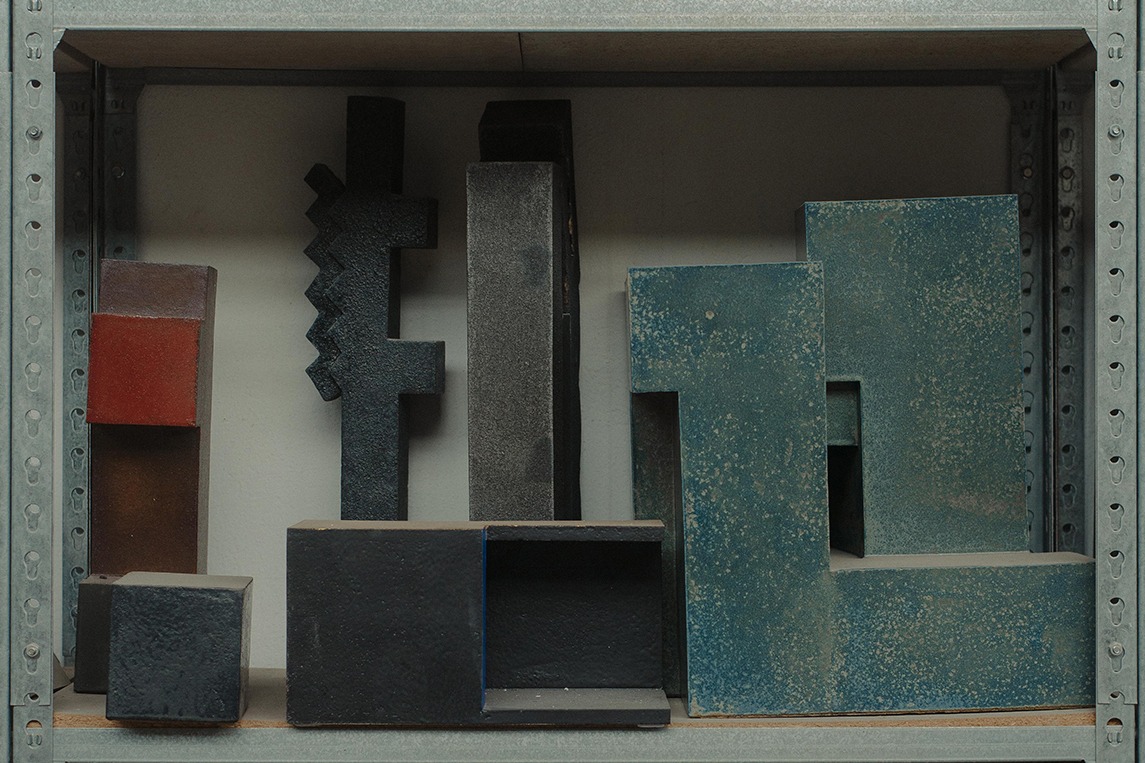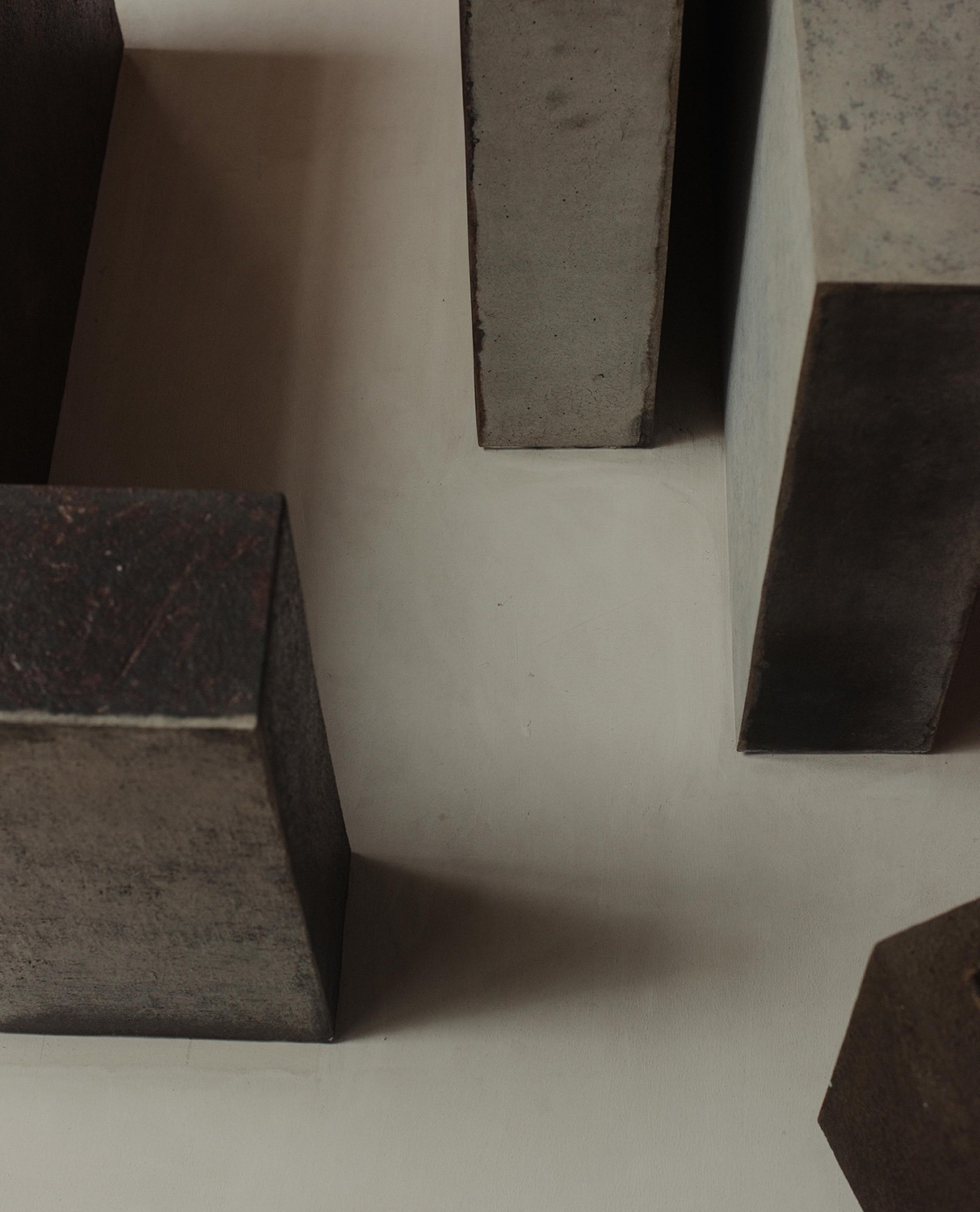A taxi drives us around the outskirts of Alboraya, a municipality near Valencia. The fields coexist with warehouses and industrial buildings under a gray January sky.
Observing the carved earth, the farmsteads, some orange groves, I think poetry and geometry. This is the environment where, more than forty years ago, ceramist, sculptor and painter Enric Mestre, born in Alboraya in 1936, built a workshop affine to his work rational, pure shapes and right angles.
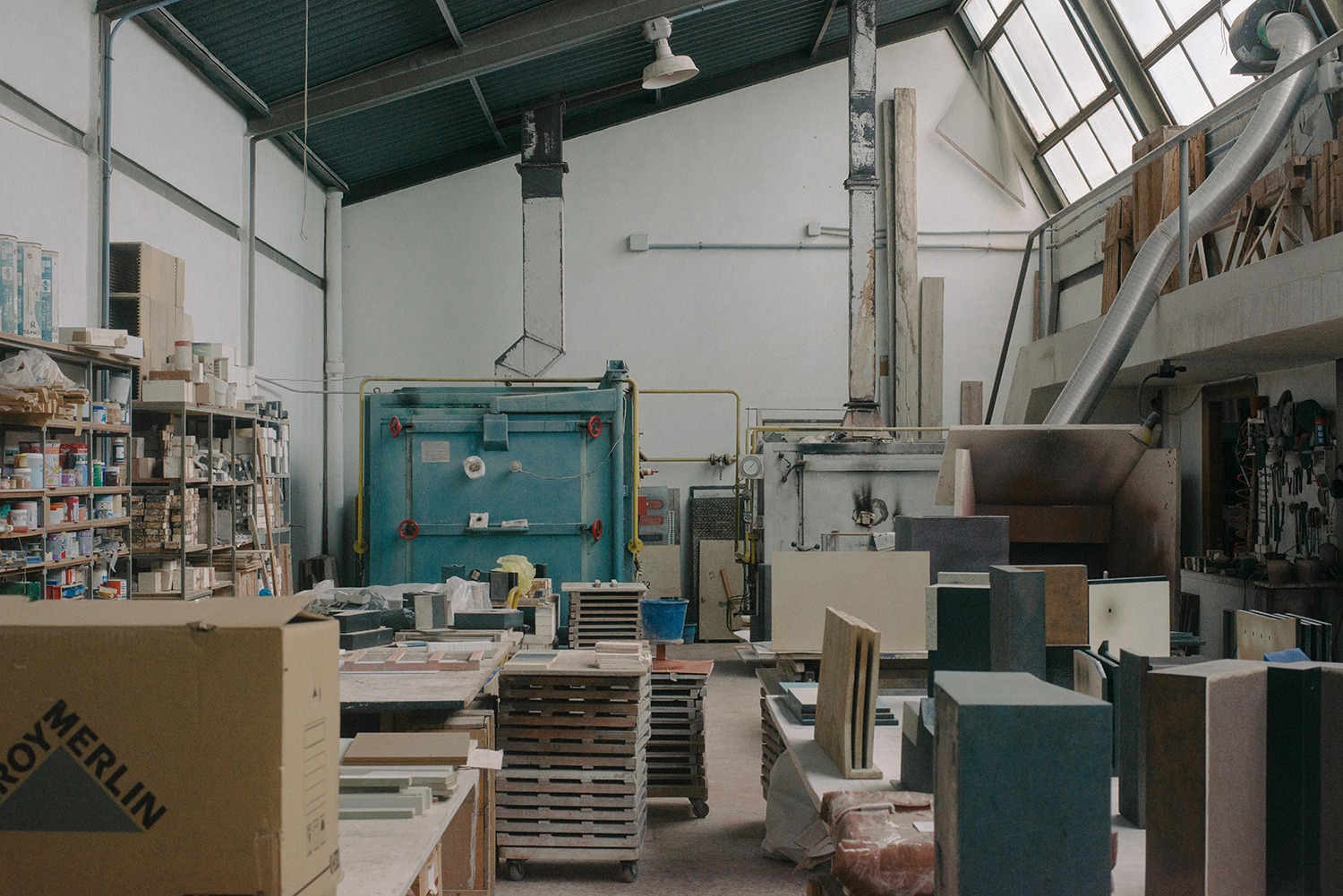
We ring the bell. The artist appears all wrapped up and presents himself in a kind, yet down to earth way. He guides us through a large green door. Inside, we find an open plan with its adjoining rooms, shelves, tables, corners all overflowing with light and sculptures. “This is my world”, says Enric as he starts to show us the rooms and some of the works they contain.
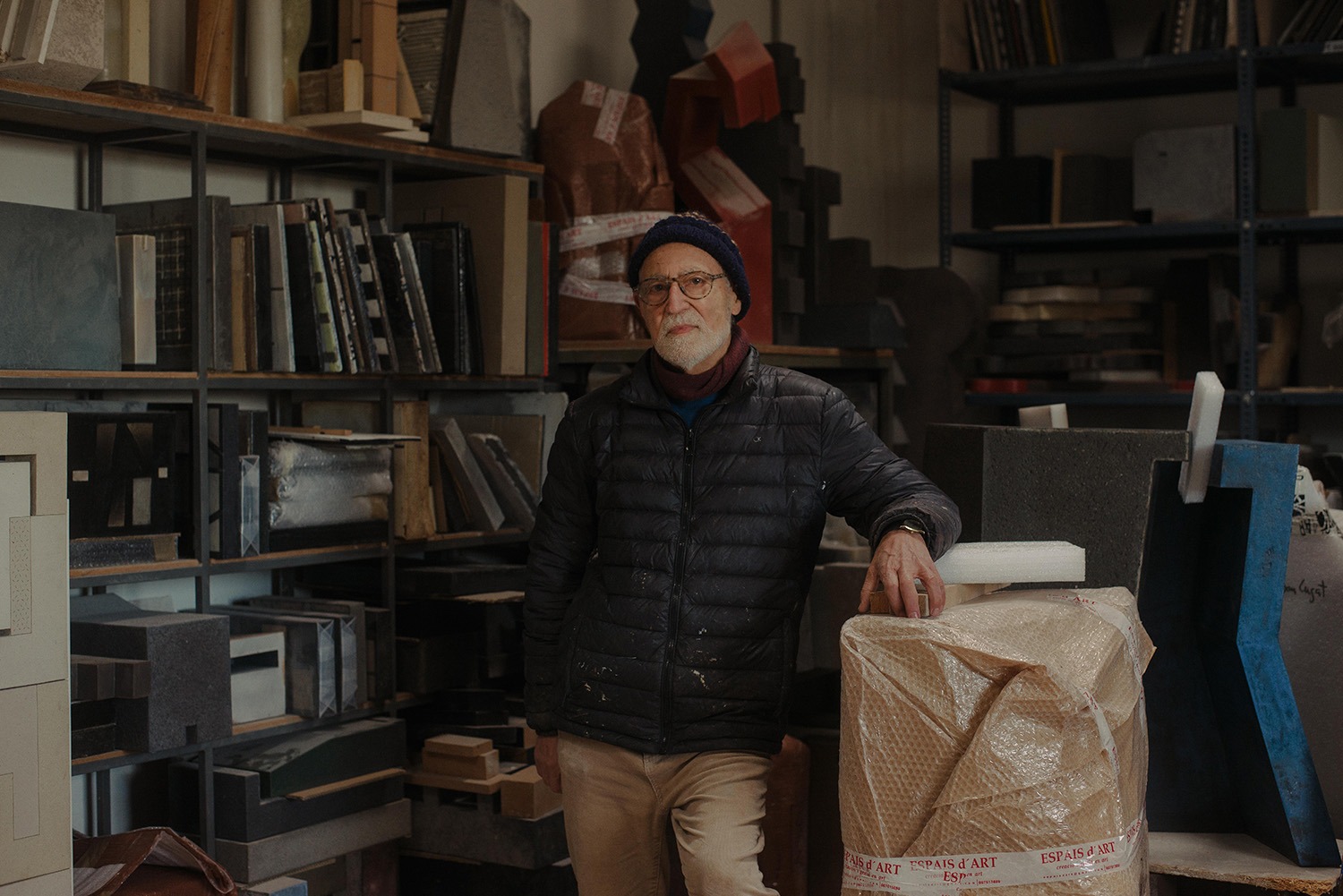
Constant movement is palpable in the workshop. An assistant comes and goes while Enric points out some boxed pieces that have returned from exhibitions. I ask him if he sells everything he produces. “Some… but most of all, I have lived from teaching and from large commissions public sculptures, murals….” We talk about his early years as a graphic designer in advertising. Also about how, by chance, he became interested in ceramics: “I was invited to a class, I got hooked and decided to learn more. I was able to choose between the artistic or technical path. I went for the latter because I had already studied Fine Arts and ended up ready to run a ceramic industry, but I wanted to apply all that knowledge to art.”
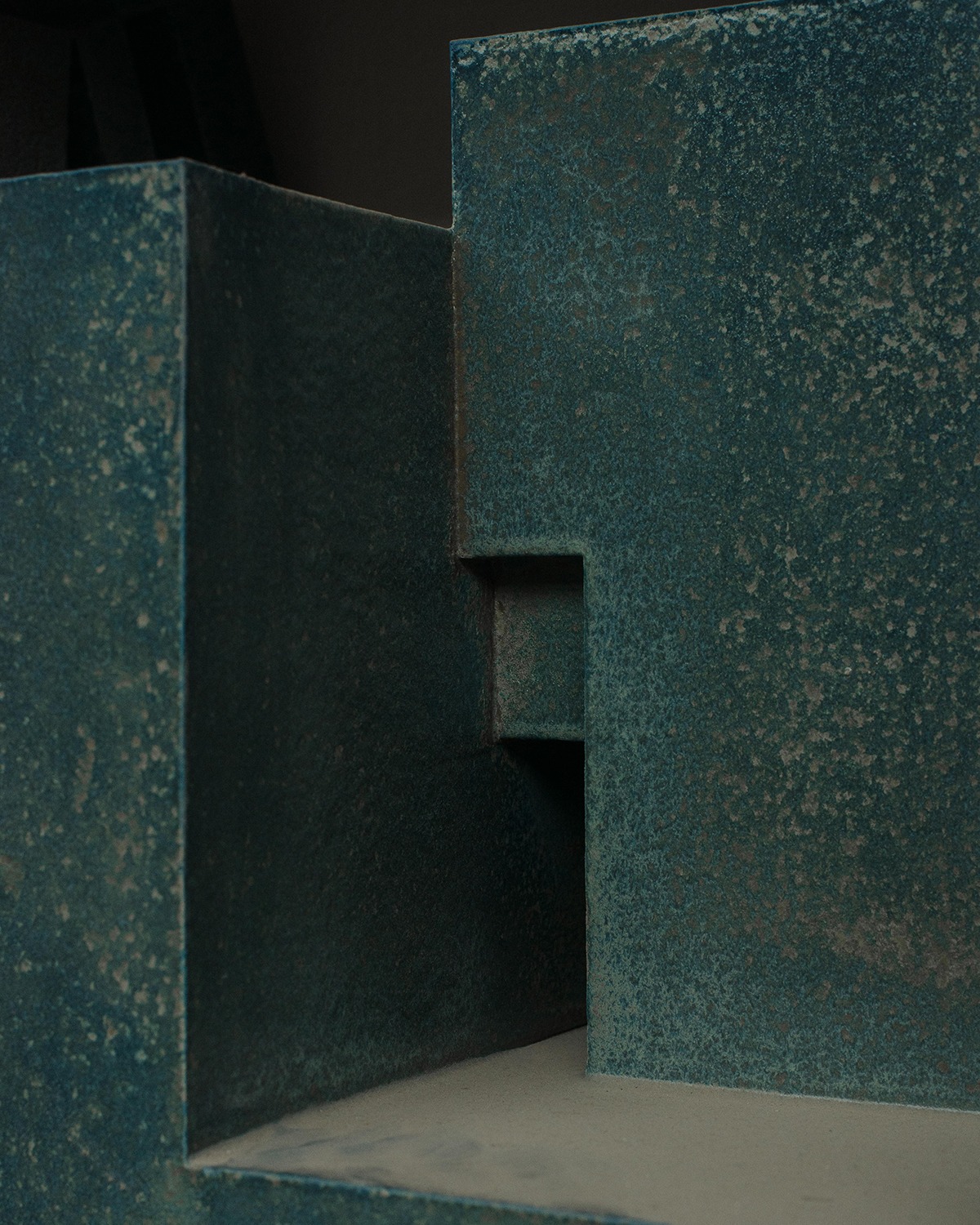
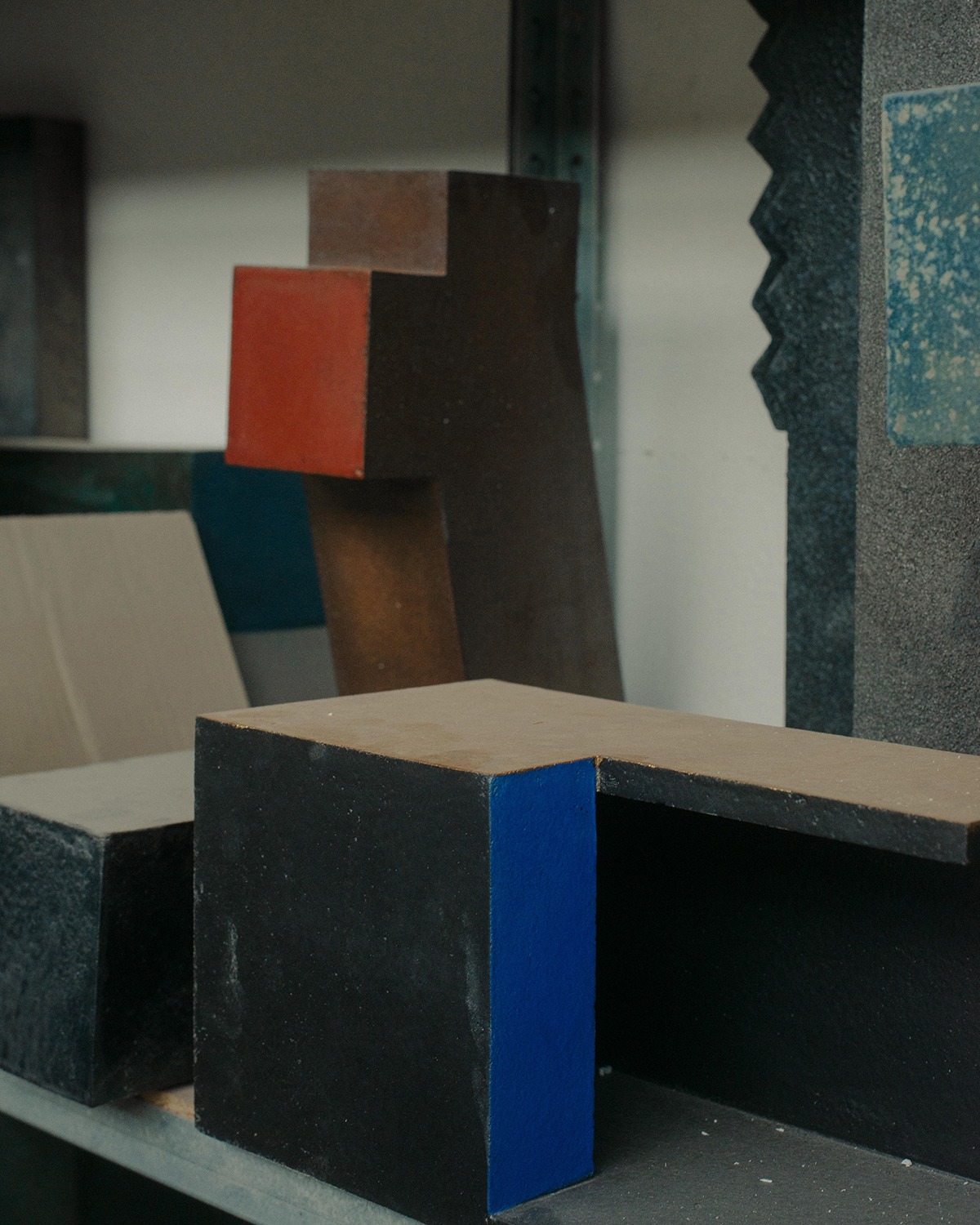
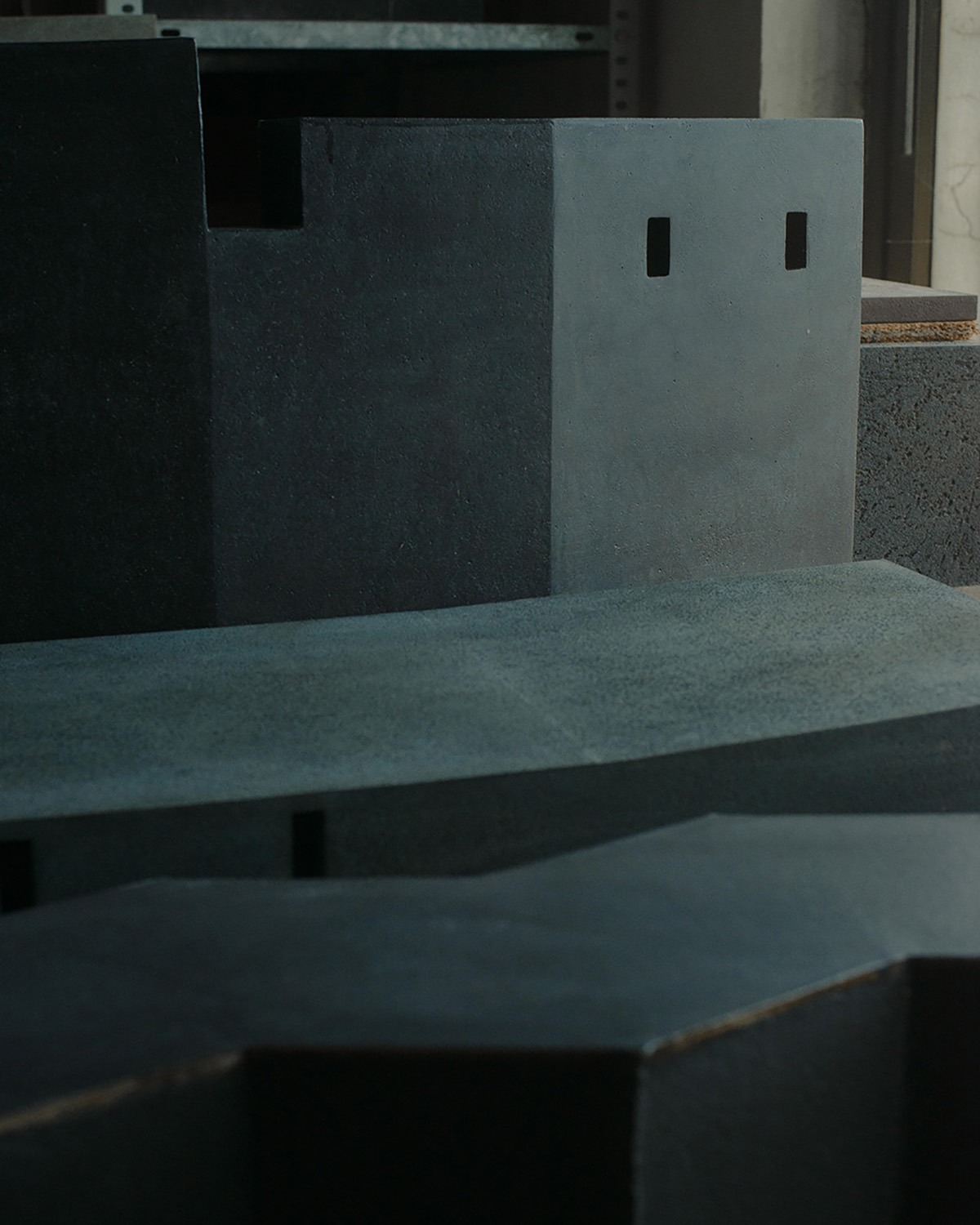

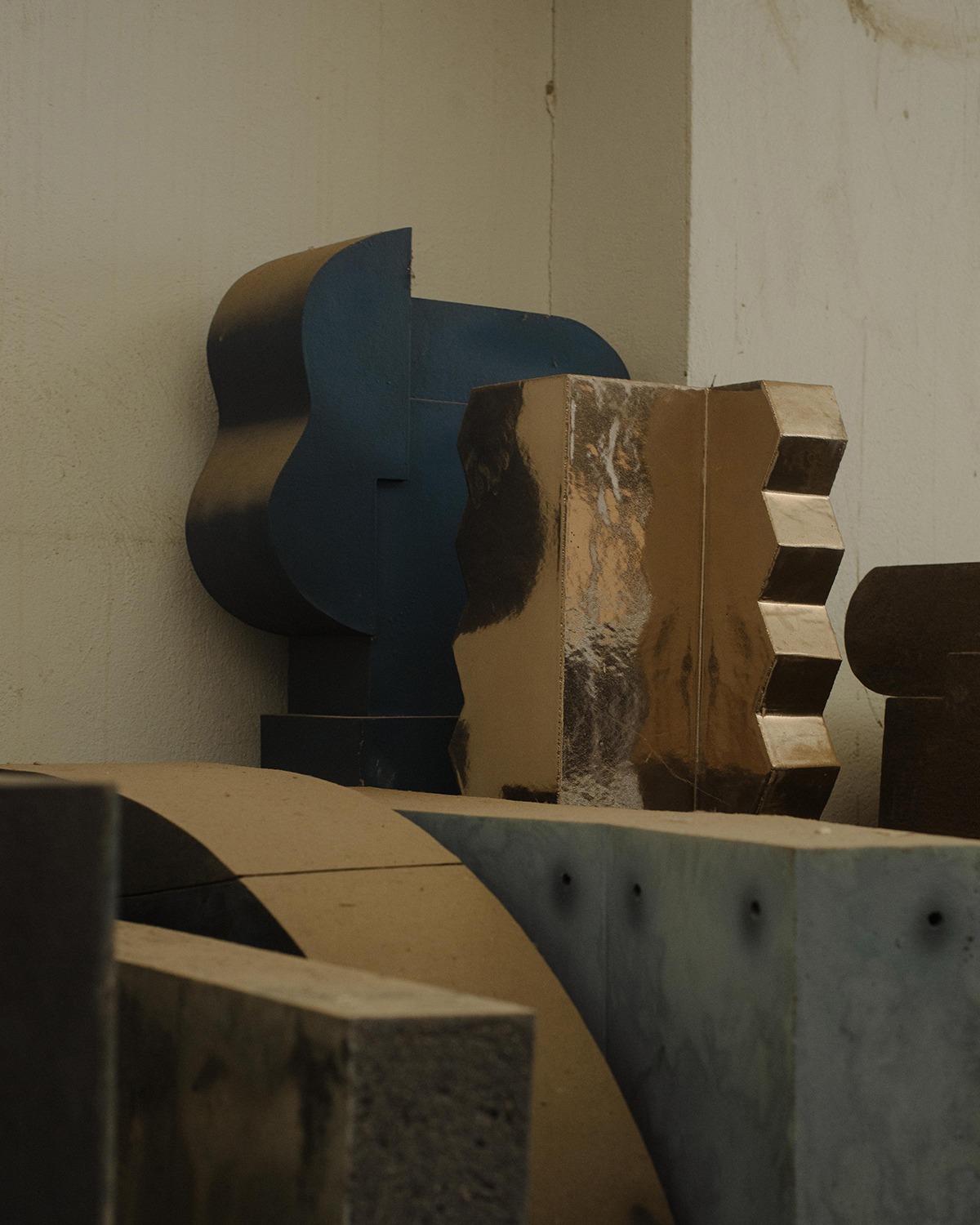
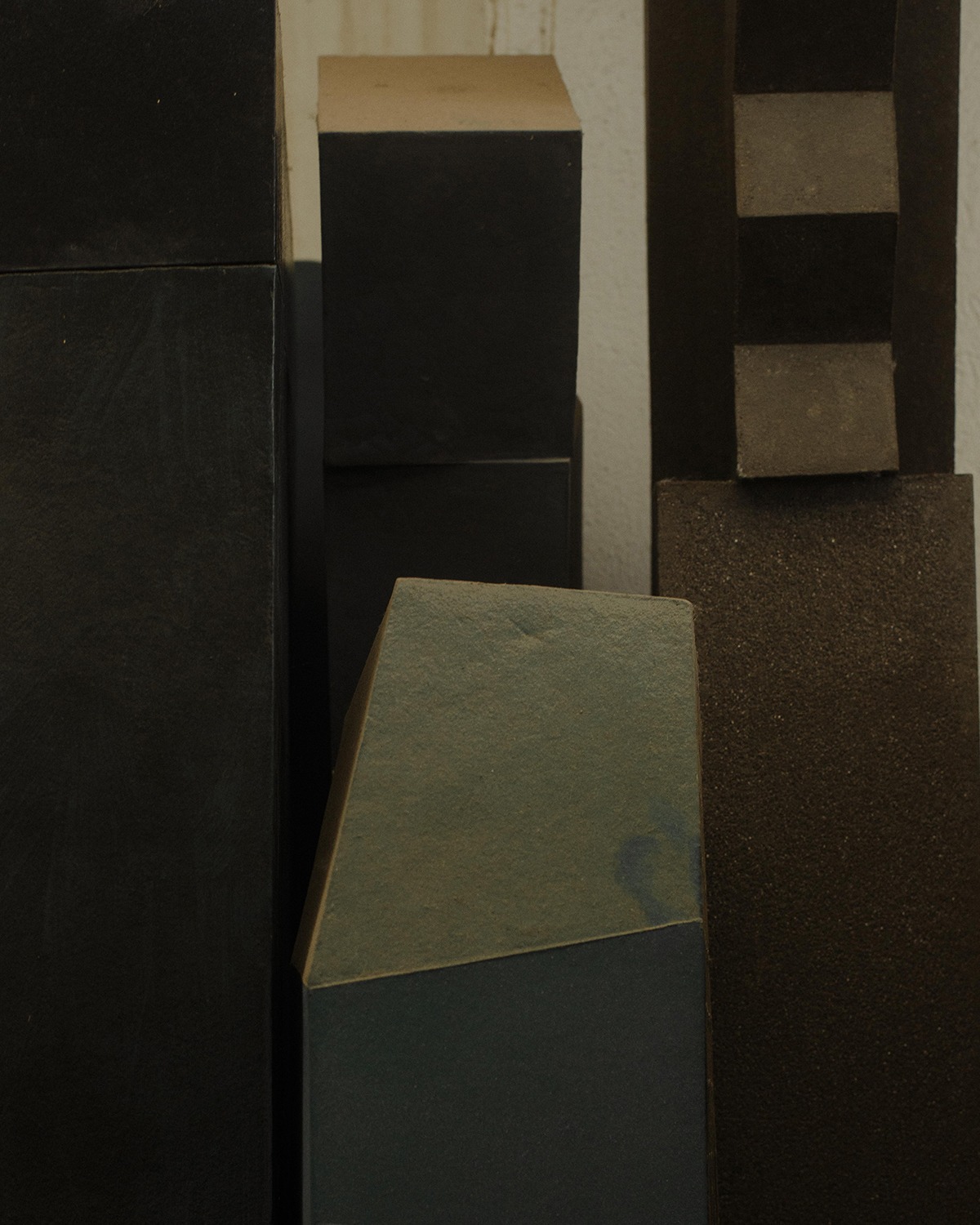
Indeed, Mestre focuses on artistic creation. “Sometimes I paint on canvas, but ceramics allow me to delve into three essential dimensions for me: colour, shape and texture.” I ask if he is a pioneer in using ceramics specifically as an art form? He reflects and replies, “In my humble opinion, there were two of us—Arcadio Blanco and I”. When inquiring about his inspirations, I tell him I can see influences from Rothko, Oteiza; “Yes, and Mondrian”, he adds. The landscape that surrounds us must also be important for him. He explains: “These tiger nut fields are important for me; their geometric shapes are always present in my works”. His sculpture Homenatge a l’Horta, located in a square in Alboraya, is a good proof of all this.
This article is included in issue Nº14. Buy it here.
